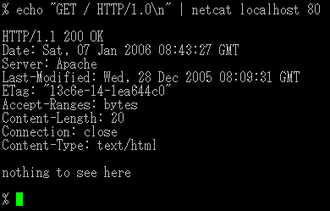20 tools that every Sysadmin needs to know
Sysadmin or the system administrator is responsible for the entire system he manages from troubleshooting, testing, communicating and fixing systems so that they run "well". In order to do so, they must hold back the necessary tools.
Using the right tools for your career will save many hours of hard work, boring. If you are a Sysadmin, make sure you know or are using the 20 tools we have listed below.
WireShark
 http://www.wireshark.org/
http://www.wireshark.org/
WireShark is the most important and popular network protocol analysis tool in the world. It allows you to see what's happening on the network at the micro level. This is the standard applied in many industries and educational institutions. Wireshark works multi-platform and works on macOS, Windows, and Unix.
- Use Wireshark to analyze data packets in the network
FileZilla
 https://filezilla-project.org/
https://filezilla-project.org/
FileZilla is an FTP client and FTP server, with GPL license. It is able to connect to the SSH server securely. FileZilla is a great choice if you need to access the client comfortably, with GUI interface instead of CLI.
- Instructions for setting up individual FTP Server with FileZilla
Fiddler
http://www.telerik.com/fiddler
Fiddler is a proxy server, running locally, allowing developers to debug web applications. If you have multiple applications or different processors that can change the values in a form, it will show the output when converting. If you are working with a remote API, you can also compose and redo requests if needed.

Sysinternals Suite
 http://technet.microsoft.com/en-us/sysinternals/bb545021.aspx
http://technet.microsoft.com/en-us/sysinternals/bb545021.aspx
Sysinternals Suite is the most commonly used Sysadmin toolkit for file, drive, network, process management, security and system information collection on Windows servers. One of the most popular and immediately useful utilities is Autoruns.exe, which helps identify automatic startup programs.
Mosh
http://mosh.mit.edu/
SSH users will get used to generating errors during remote sessions, a problem with WiFi that will cause work in progress to crash. Mosh is a secure alternative protocol that allows recovery of sessions as well as improved performance in general. Mosh is available for almost any platform, including plugins on Chrome.

Autossh
http://www.harding.motd.ca/autossh/
Designed for SSH tunnels rather than interactive sessions. Autossh will restart the session, the SSH tunnel is broken. If you want a permanent session, use it with "screen".
Cliforgot
 http://cliforgot.com
http://cliforgot.com
Create a complete command line, complete options for many Windows system administration commands. These are documents that can be copied and pasted.
Clonezilla
 http://clonezilla.org/
http://clonezilla.org/
If you are managing and providing resources for a large number of computers, creating a main image and pushing it to all target machines is what Clonezilla will do. Clonezilla's multi-cast feature allows updating multiple parallel machines at the same time, with a large amount of data.
Clusto
 https://github.com/clusto/clusto
https://github.com/clusto/clusto
Clusto is a Python-based server cluster management tool, allowing you to maintain an interface to interact with your infrastructure. Clusto stores data in any database that you can interact with via SQLAlchemy, reducing time and effort because you can start with everything you have on the spot.
Ansible
 http://www.ansible.com
http://www.ansible.com
Ansible makes automation of IT provisioning tasks the easiest. Ansible Playbooks is a programming method that combines commands to run, then can execute them on any number of servers you are connecting via SSH.
Chef
 http://www.opscode.com/chef/
http://www.opscode.com/chef/
Chef helps automate your server infrastructure through the Chef client installed on each network node. The client will periodically probe the central Chef server and check the internal configuration based on the guided configuration, if any differences are found it will run the commands to bring them back to the correct configuration. Chef's ability to check the correctness of configuration is very useful in quick recovery if manual changes are made by Sysadmin.
Puppet
 http://puppetlabs.com/
http://puppetlabs.com/
Puppet allows declaring the configuration of servers through their Ruby DSL. If you already know Ruby, use Puppet quite simply, easily manage any number of servers. Puppet also provides a pre-configured virtual machine for you to study and try if needed.
Dnsmasq
 http://www.thekelleys.org.uk/dnsmasq/doc.html
http://www.thekelleys.org.uk/dnsmasq/doc.html
Dnsmasq is a compact DNS decoder for local area network, you can use it instead of BIND or other "heavy" servers. This tool is ideal for use in low resource environments, such as routers or firewalls. It stores local requests but responds back to the DNS provider.
Bugzilla
 http://www.bugzilla.org/
http://www.bugzilla.org/
Used primarily to report and handle software bugs, Bugzilla has been extended to allow quality assurance management, submit and review patches. Buzilla integrates with many source control systems, allowing the establishment of two communication ways to close errors with commitments, etc.
Sysdig
 http://www.sysdig.org/
http://www.sysdig.org/
Sysdig is an open-source, system-level management tool that allows capturing, filtering and saving the various processes running on Linux machines at any point. Sysdig does some common tasks like tracking any file that is open in a folder, in real time, easily. The Lua script can be used to modify and extend Sysdig's basic functions.
TreeSize
 http://www.jam-software.com/treesize_free/
http://www.jam-software.com/treesize_free/
TreeSize is the NTFS file size viewer, which helps visualize the amount of space that the file will use in Windows Explorer. TreeSize works on the target file's Master File Table, allowing you to read the results faster without having to view the content.
7-Zip
 http://www.7-zip.org/
http://www.7-zip.org/
Open source decompression software, works very fast on any large .zip file and can create self-extracting files in .7z format.
Notepad ++
 http://notepad-plus-plus.org/download/
http://notepad-plus-plus.org/download/
Great source code editor, regular expression support, syntax highlighting and tabbed interface. If you move between computers, try using the portable version of Notepad ++, which can run from USB or shared drives.
KeePass
 http://keepass.info/
http://keepass.info/
Open source password manager, KeePass lets you create strong, random passwords for each website or application. Safe storage, KeePass allows you to maintain secure passwords without having to remember hundreds of 20-character sequences plus passwords or even worse - type them out. If you need to share password files with others or access from multiple locations share that file in DataAnywhere.
Netcat
http://netcat.sourceforge.net/
Netcat is likened to the "swiss-army knife" of the network utility, which is useful for anything related to sending or receiving network gate information.
For example: If you need a one-shot webserver on port 8080
{echo -ne "HTTP / 1.0 200 OKrnContent-Length: $ (wc -c

Process Explorer
http://technet.microsoft.com/en-us/sysinternals/bb896653.aspx
Monitor, identify, start and stop processes that need to be manipulated on a Windows machine. In addition, this tool is also great if used to track memory leaks and find fake processes.

Do we miss any tools that you find useful? Please share by commenting below this article!
You should read it
- New experience with IDEAL Administration 2012
- Free network tools for Admin
- Comprehensive network monitoring tool set
- The system administrator (sysadmin) needs to update the software if he / she does not want to lose the network
- You have confidence in your knowledge of Network Administration P5
- Are you confident with your Network Administration knowledge P4
- You have confidence in your network administration knowledge P9
- You have confidence in your knowledge of Network Administration P7
May be interested
- Pony Ma overcomes Jack Ma to become the richest person in China
 join us to learn about pony ma - who just overcame jack ma to become the richest person in china!
join us to learn about pony ma - who just overcame jack ma to become the richest person in china! - Instagram allows two people with Live Stream
 instagram claims to be testing a new feature that allows users to play live videos with friends.
instagram claims to be testing a new feature that allows users to play live videos with friends. - Microsoft released an updated patch for 25 critical security holes
 as part of august patch tuesday, microsoft yesterday announced the release of 48 security updates for all supported windows operating systems and other products.
as part of august patch tuesday, microsoft yesterday announced the release of 48 security updates for all supported windows operating systems and other products. - New points on Microsoft Outlook.com Beta and how to register
 microsoft has started launching the beta version of outlook.com from today. this is the opt-in web version that is enabled on outlook.com and is available to all users in the next few weeks.
microsoft has started launching the beta version of outlook.com from today. this is the opt-in web version that is enabled on outlook.com and is available to all users in the next few weeks. - 5 biggest ransomware attacks in the last 5 years
 from cryptolocker to wannacry and notpetya, these attacks show the development of the world of extortion code.
from cryptolocker to wannacry and notpetya, these attacks show the development of the world of extortion code. - Facebook is ready to confront YouTube with its brand new Watch, video service
 we've heard rumors about facebook's new video service plan and today, watch has officially aired, becoming a rival of youtube and netflix.
we've heard rumors about facebook's new video service plan and today, watch has officially aired, becoming a rival of youtube and netflix.






 5 Linux commands every sysadmin needs to know
5 Linux commands every sysadmin needs to know The system administrator (sysadmin) needs to update the software if he / she does not want to lose the network
The system administrator (sysadmin) needs to update the software if he / she does not want to lose the network 8 collaboration tools need not register, use immediately after 10 seconds
8 collaboration tools need not register, use immediately after 10 seconds Top 7 UX design tools, leading UI
Top 7 UX design tools, leading UI How to Learn Effectively with AI Tools
How to Learn Effectively with AI Tools